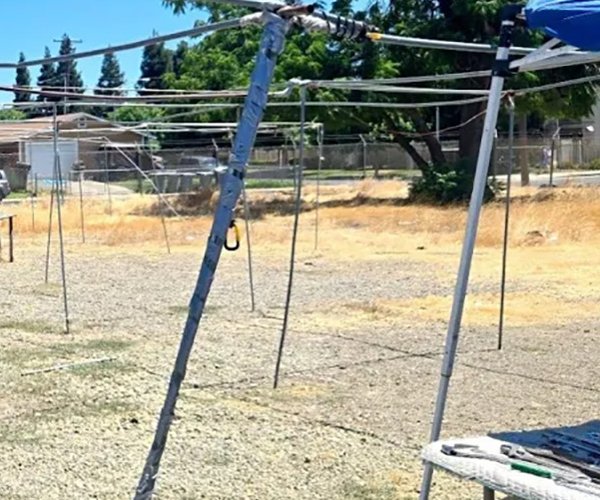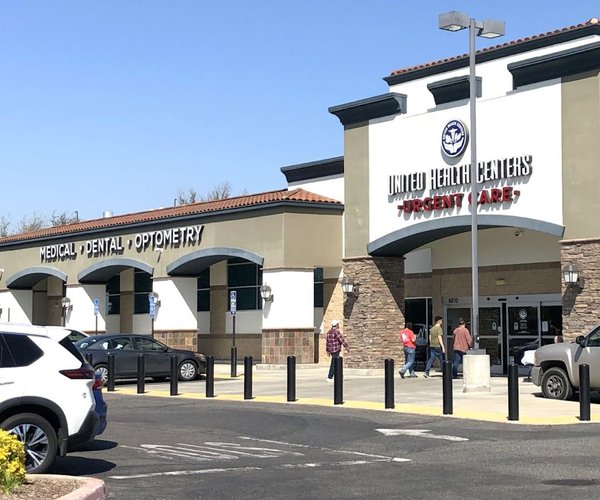Turlock could soon host a number of new pedestrian walkways and bicycling lanes, as the Turlock Planning Commission approved the Active Transportation Plan on Thursday, a document that has been 18 months in the making and includes projects, standards, policies and programs designed to encourage and support biking and walking in the community.
The Plan's approval was celebrated by a number of local residents at the Planning Commission meeting, including Turlock's own bicycling family, the Claes'. John and Elizabeth Claes, along with their two sons, have been using bicycling as their main source of transportation for over five years.
After receiving information on how the Plan would be updated as future laws and city priorities came about, Elizabeth Claes then offered to help members of the Planning Commission and City's Planning Department figure out how they too could turn their main mode of transportation from four wheels to two.
"So you can see how wonderful Turlock is from a bike," she said.
Jeffrey Sparks, a Turlock resident who said he moved to town to work at Hilmar Cheese Company after receiving his degree in Food Science from UC Davis, touted the benefits of having a pedestrian and cycling-friendly community as a means of attracting professionals to town.
"If a city is more accessible to walking and biking, it's more familiar to people from China, New Zealand, wherever. This just shows how much potential this area has, biking and walking is a demand professionals have in mind when moving to a new area," Sparks said.
The Active Transportation Plan recommends 21 bikeway corridor projects, including a path around Donnelly Lake and a Lander Avenue biking lane from Main Street to Linwood. Eleven corridors in Turlock were identified as priorities for pedestrian infrastructure improvements, including closing gaps in the sidewalk network and improving or providing new crossings at intersections.
A Safe Routes to School program is included in the Plan, with routes mapped for each school campus and recommendations for new programs like a "walking school bus," where organized groups of students walk or bike to school with an adult.
The Plan also includes recommendations for education programs on safety rules and laws and increasing awareness regarding walking and bicycling opportunities.
The Turlock Planning Commission approved the Active Transportation Plan, prepared by Alta Planning + Design, with the recommendation that the City Council not only adopt the plan but also amend the General Plan to require new developments to follow ATP standards.
The City Council is set to consider adopting the Active Transportation Plan at their Sept. 22 meeting. If the Council adopts the plan, the City can then apply for grant funding through the State's Bicycle Transportation Account and other grant programs.
To view the final draft of the Active Transportation Plan, visit www.bikewalkturlock.com.
Getting to work
According to the American Community Survey 2009-2013 estimates, an overwhelming majority of Turlock’s workers commute by driving alone—among all workers 16 and over who did not work from home, 84.6 percent reported this as their primary mode of transportation to work. Carpooling is the second most-used mode of transportation, at 11.7 percent. All remaining modes— including walking, bicycling, riding public transportation, and others—together amount to fewer than 4 percent of commute trips. Of these “active transportation” modes, walking was the most frequent choice for Turlock workers at 1.9 percent.
Bicyclist and pedestrian safety
By taking a closer look at the locations in Turlock where high numbers of bicycle and pedestrian collisions have occurred over the last 10 years, priority intersections and corridors emerged. Information gathered found that both bicyclists and pedestrians faced safety challenges in the same areas. The graph shows the 10 corridors with the highest number of bicycle and pedestrian crashes between 2003 and 2012. Many of the corridors have speed limits and widths that may create stressful environments for walking and bicycling, potentially leading to cyclists riding on sidewalks or against the flow of traffic. Both of these behaviors can increase the risk for collisions. These collisions tend to be clustered in the central and southern parts of Turlock along Geer Road/Lander Avenue, Fulkerth Road, Main Street, and Canal Drive.
Biking survey
When asked what discourages them from biking more in Turlock, respondents of a survey ranked a lack of bike lanes or paths as the factor that most influenced their decision not to bike—75 percent of respondents selected this answer. Other factors that were selected by a large percentage of respondents were aggressive drivers (59 percent), potholes or other obstacles in bike lanes (52 percent),and personal safety concerns (49 percent).
Pedestrian projects
Eleven corridors in Turlock were identified as priorities for pedestrian infrastructure improvements, including closing gaps in the sidewalk network and improving or providing new crossings at intersections. Some specific pedestrian infrastructure improvements were identified during Safe Routes to School audits at each of the Turlock public schools. Some improvements fall on school district property, and will require coordination with the Turlock Unified School District to implement.









